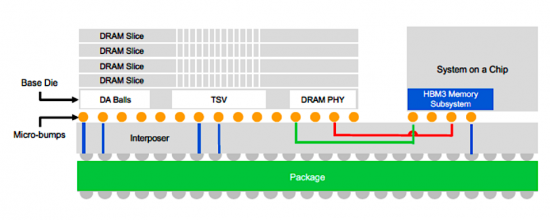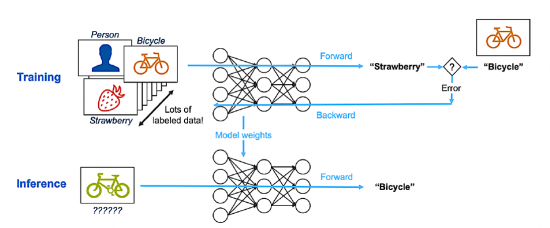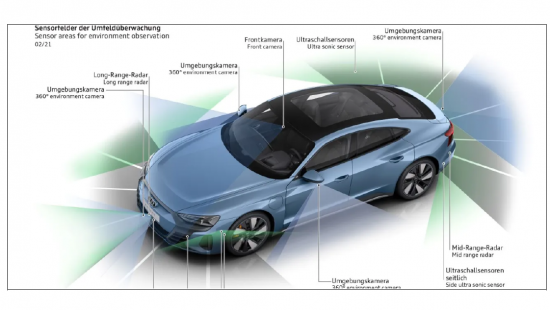PUBLISHER: Information Network | PRODUCT CODE: 1473280

PUBLISHER: Information Network | PRODUCT CODE: 1473280
Hot ICs: A Market Analysis of Artificial Intelligence (AI), 5G, Automotive and Memory Chips
Trends in Artificial Intelligence (AI), 5G technology, the automotive industry, and memory chips
In the realm of Artificial Intelligence (AI), several key trends are emerging, including advancements in AI architectures and algorithms, the proliferation of edge AI, and the integration of AI into various industries and applications. AI technologies are becoming more sophisticated, enabling tasks such as natural language processing, computer vision, and autonomous decision-making.
The adoption of 5G technology is driving significant transformations across industries, enabling faster and more reliable connectivity, supporting the proliferation of Internet of Things (IoT) devices, and facilitating innovations in areas like augmented reality (AR), virtual reality (VR), and autonomous vehicles.

In the automotive sector, there is a growing emphasis on electrification, connectivity, and autonomy, leading to the development of electric vehicles (EVs), connected cars, and selfdriving technologies.
Finally, in the realm of memory chips, there is a focus on increasing storage capacity, improving performance, and reducing power consumption to meet the growing demands of dataintensive applications such as cloud computing, artificial intelligence, and big data analytics.

These trends collectively represent the ongoing evolution and convergence of AI, 5G, automotive, and memory chip technologies, driving innovation and reshaping industries across the globe.
Convergence of Technology
The convergence of Artificial Intelligence (AI), 5G technology, the automotive industry, and advancements in memory chip technology represents a pivotal shift in the global technological landscape, heralding a new era of innovation and connectivity. This comprehensive report delves into the intricate dynamics at the intersection of these four critical sectors, unveiling how they collectively form the backbone of modern digital transformation and setting the stage for unprecedented growth opportunities across various industries.
Artificial Intelligence stands at the forefront of this technological revolution, driving smarter, more efficient systems that are transforming how we live, work, and interact. From enhancing computational power to enabling more sophisticated data analysis and decision-making processes, AI's role in shaping the future of technology cannot be overstated. This report explores AI's integration across industries, its impact on developing intelligent systems, and how it's revolutionizing everything from consumer electronics to complex industrial operations.

Parallelly, the rollout of 5G technology marks a significant milestone in connectivity, offering speeds and reliability that far surpass its predecessors. The implications of 5G extend beyond mere communication enhancements, facilitating the real-time data transmission necessary for the Internet of Things (IoT), autonomous vehicles, and remote healthcare services, among others. Our analysis provides insights into the 5G ecosystem, examining infrastructure challenges, regulatory landscapes, and the synergy between 5G and AI in catalyzing technological advancement.
The automotive sector is undergoing a transformative phase, with electrification, autonomous driving, and connected vehicles redefining the very essence of mobility. This report assesses how AI and 5G collectively accelerate automotive innovations, focusing on the integration of advanced driver-assistance systems (ADAS), in-vehicle infotainment, and vehicle-to-everything (V2X) communications. It also considers the implications for manufacturers, consumers, and the broader transportation infrastructure.
Memory chips, the unsung heroes of the digital age, play a crucial role in sustaining the growth of AI, 5G, and automotive technologies. As these sectors burgeon, so does the demand for faster, more efficient, and higher-capacity storage solutions. This section of the report evaluates the latest developments in memory chip technology, including DRAM, NAND, and emerging non-volatile memory technologies, highlighting their critical role in supporting the data-intensive needs of modern technologies.
In compiling this report, we aim to provide a holistic overview of how AI, 5G, the automotive sector, and advancements in memory chip technology are intricately linked, driving forward a new wave of innovation and industry growth. Through detailed market analysis, technological insights, and forward-looking projections, this report offers valuable intelligence for stakeholders across these sectors, enabling informed decision-making and strategic planning in an increasingly interconnected technological ecosystem.
About This Report
This report encompasses a broad spectrum of analyses, insights, and projections that illuminate the current state and future trajectory of these interlinked sectors. This report not only delves into individual technologies and their applications but also explores the synergies and intersections that are propelling innovation and market growth. Here's an expanded view of what such a report covers:
Artificial Intelligence (AI)
- Market Overview: Analysis of the global AI market, including size, growth trends, and forecasts. It examines key segments such as machine learning, natural language processing, and AI in robotics.
- Technology Trends: Exploration of cutting-edge AI technologies and methodologies, including deep learning, computer vision, and AI chips. The report assesses how these technologies are transforming industries.
- Application Areas: Detailed review of AI applications across various sectors, including healthcare, finance, retail, and more, highlighting case studies of successful AI integration.
- Challenges and Opportunities: Discussion on ethical considerations, data privacy issues, and the talent gap in AI. It also explores funding trends and governmental policies affecting AI development and adoption.
5G Technology
- Infrastructure and Deployment: Examination of the global rollout of 5G, including infrastructure requirements, spectrum allocation, and deployment strategies. It evaluates the progress in major regions and the challenges faced.
- Use Cases and Applications: Insight into the transformative potential of 5G across industries such as entertainment, manufacturing, and agriculture, emphasizing enhanced connectivity and IoT.
- Market Dynamics: Analysis of the competitive landscape, key players, and partnerships shaping the 5G ecosystem. It includes investment trends and regulatory impacts on market evolution.
- Future Prospects: Projection of the future of 5G, including the integration with satellite communications, development of 6G, and its role in enabling smart cities and autonomous systems.
Automotive Industry
- Electrification and Autonomous Driving: Overview of trends in electric vehicles (EVs) and autonomous driving technologies. This section covers advancements in battery technology, ADAS, and regulatory frameworks impacting vehicle automation and connectivity.
- Connectivity Solutions: Examination of the role of 5G in transforming automotive connectivity, including vehicle-to-everything (V2X) communication, in-car infotainment systems, and telematics.
- Market Players and Innovations: Analysis of leading automotive manufacturers, technology companies, and startups driving innovation in connected and autonomous vehicles.
- Sustainability and Challenges: Discussion on the automotive industry's move towards sustainability, including challenges in adoption, infrastructure development, and the impact on urban mobility.

Memory Chips
- Technology Evolution: Deep dive into the developments in memory chip technology, including DRAM, NAND flash, and emerging technologies like 3D XPoint and MRAM. It assesses the impact of these advancements on storage capacity, speed, and power efficiency.
- Industry Applications: Exploration of how memory chips support the data needs of AI, 5G, and automotive technologies, facilitating advancements in edge computing, data centers, and consumer electronics.
- Market Analysis: Review of the global memory chip market, including supply and demand dynamics, key manufacturers, and pricing trends. It also considers the impact of geopolitical factors on the semiconductor supply chain.
- Future Directions: Projections for the memory chip market, focusing on innovations in semiconductor materials, manufacturing processes, and the integration of memory technologies in next-generation computing architectures.
Table of Contents
Chapter 1. Executive Summary
Chapter 2. Automotive
- 2.1. Automotive Industry Metrics
- 2.2. Automotive Semiconductor Industry
- 2.2.1. Automotive Memory Semiconductors
- 2.2.2. Automotive Semiconductors By Type
- 2.2.2.1. Microcontrollers
- 2.2.2.2. ASSP/ASICs
- 2.2.2.3. Analog
- 2.2.2.4. Discrete
- 2.3. Key Technology And Component Suppliers
- NXP
- STMicroelectronics
- Renesas Electronics
- Nvidia
- Intel (Mobileye and Moovit)
- Skyworks
- Qualcomm
- onsemi
- Texas Instruments
- Analog Devices
- 2.4. Automotive/ Advanced Driver Assistance Systems (ADAS)
- 2.4.1. Competition from Alternative Automotive AI Chips
- Intel-Mobileye
- Qualcomm
- Nvidia
- Huawei
- Horizon Robotics
- Black SesameTechnologies
- Xin Chi Technology
- Tesla
- 2.4.1. Competition from Alternative Automotive AI Chips
- 2.5. LiDAR Sensors
- 2.5.1. LiDAR - Cost Considerations
- 2.5.2. Automotive Applications
- 2.5.3. LiDAR Suppliers
- Velodyne
- Luminar
- Aeva
- Ouster
- Innoviz
- Hesai
- Livox
- Innovusion
Chapter 3 5G
- 3.1 5G Chip Technology and Trends
- 3.2. Applications
- 3.2.1. Mobile Handsets
- 3.2.2. Interdisciplinary Connections
- 3.3. Market Analysis
- 3.3.1. Market Forecasts
- 3.3.2. New Components For 5G vs 4G
- 3.3.2.1. 5G Modem Chip Overview
- 3.3.2.2. 5G Chips
- 3.3.2.3. mmWave Modules
- 3.3.2.4. Traditional MIMO Antennas
- 3.4. 5G Chip Supplier Products and Profiles
- Analog Devices
- Anokiware
- Apple
- Broadcom
- Huawei
- Infineon
- Intel
- Inphi
- Microchip
- MediaTek
- Marvell
- M/A-Com
- NXP Semiconductor
- Onsemi
- Qualcomm
- Qorvo
- Samsung Electronics
- Sivers IMA
- Skyworks Solutions
- STMicroelectronics
- Teradyne
- Texas Instruments
- Win Semiconductors
- Xilinx
Chapter 4. Artificial Intelligence (AI)
- 4.1. AI Technology and Trends
- 4.1.1. Cloud AI Computing
- 4.1.2. Edge AI Computing
- 4.1.3. The Elements Of Artificial Intelligence
- 4.1.3.1. Importance Of Training And Inference
- 4.1.3.2. The Growing Importance Of Accelerators In Dc Spending
- 4.1.3.3. Training Costs
- 4.1.3.4. Generative AI
- 4.2. Market Analysis
- 4.2.1. AI Chip Revenue Forecast
- 4.3. Applications
- 4.3.1. Industry Applications of AI
- 4.3.1.1. Smart Healthcare
- 4.3.1.2. Smart Security
- 4.3.1.3. Smart Finance
- 4.3.1.4. Smart Grid
- 4.3.1.5. Smart Hone
- 4.3.2. AI-Powered Devices
- 4.3.2.1. Smart Speakers
- 4.3.2.2. Drones
- 4.3.2.3. Intelligent Robots
- 4.3.3. Military/Defense Applications
- 4.3.3.1. China's AI Plan
- 4.3.2.1. Driverless Vehicles
- 4.3.2.2. Computer Chips
- 4.3.2.3. Financial
- 4.3.2.4. Facial Recognition
- 4.3.2.5. Retail
- 4.3.2.6. Robots
- 4.3.3. AI Chip Revenue Forecast
- 4.3.1. Industry Applications of AI
- 4.4. AI Chip Technology
- 4.4.1. Graphics Processing Unit (GPU)
- 4.4.2. Field Programmable Gate Array (FPGA)
- 4.4.3. Application Specific Integrated Circuits (ASIC)
- 4.4.4. Neuromorphic Chips
- 4.4.5. Data Processing Units (DPUs)
- 4.5. AI Chip Supplier Products and Profiles
- 4.5.1. IC Vendors
- Achronix
- AMD
- Ampere
- Biren Technology
- Flex Logix
- IBM
- Intel
- MediaTek
- Nvidia
- NXP
- Qualcomm
- Rockchip
- Samsung Electronics
- STMicroelectronics
- Tentsorrent
- Xilinx
- 4.5.2. Cloud Providers - Tech Leaders
- Alibaba
- Alibaba Cloud
- Amazon
- Apple
- Baidu
- Meta
- Fujitsu
- Huawei Cloud
- Microsoft
- Nokia
- Tencent Cloud
- Tesla
- 4.5.3. IP Vendors
- ARM
- CEVA
- Imagination
- VeriSilicon
- Videantis
- 4.5.4. Startups Worldwide
- Adapteva
- aiCTX
- AImotive
- AlphaICs
- Anari AI
- Blaize
- BrainChip
- Cerebras Systems
- Cornami
- DeepScale
- Anari AI
- Esperanto Technologies
- Graphcore
- GreenWaves Technology
- Groq
- Hailo AI
- KAIST
- Kalray
- Kneron
- Knowm
- Koniku
- Mythic
- SambaNova Systems
- Tachyum
- Via
- deantis
- Wave Computing
- 4.5.5. Startups in China
- AISpeech
- Bitmain
- Cambricon
- Chipintelli
- DeePhi Tech
- Horizon Robotics
- NextVPU
- Rokid
- Thinkforce
- Unisound
- 4.5.1. IC Vendors
Chapter 5. Memory Chips
- 5.1. Memory Technology and Trends
- 5.1.1. DRAM
- 5.1.2. NAND
- 5.1.3. NVRAM - MRAM, RRAM, and FERAM
- 5.2. Applications
- 5.2.1. DRAM
- 5.2.1.1. Server
- 5.2.1.2. PC
- 5.2.1.3. Graphics
- 5.2.1.4. Mobile
- 5.2.1.5. Consumer
- 5.2.2. NAND
- 5.2.2.1. SSD
- 5.2.2.2. PC
- 5.2.2.3. TV
- 5.2.2.4. Mobile
- 5.2.2.5. USB
- 5.2.1. DRAM
- 5.3. Market Analysis
- 5.4. Memory Chip Supplier Products and Profiles
- CXMT
- Fujian
- GigaDevice Semiconductor
- Intel
- Micron Technology
- Nanya
- Powerchip Technology
- Samsung Electronics
- SK Hynix
- Toshiba (Kloxia)
- Tsinghua Chongqing
- Western Digital
- Winbond
- YMTC
List of Figures
- 1.1. IC Market By Revenue By Type By Quarter 2019-2023
- 1.2. IC Market By Units By Type By Quarter 2019-2023
- 1.3. IC Market By Asps By Type By Quarter 2019-2023
- 1.4. Smartphone And PC Unit Shipments By Quarter 2022-2023
- 1.5. Smartphone And PC Unit Shipments By Year 2021-2024
- 1.6. PC Semiconductor Market Forecast 2015-2026
- 1.7. Logic Revenues By Quarter 2019-2023
- 1.8. Memory Revenues By Quarter 2019-2023
- 1.9. Memory Units By Quarter 2019-2023
- 1.10. Memory ASPs By Quarter 2019-2023
- 2.1. Semiconductor Content Per Vehicle Forecast
- 2.2. Key Applications Of Semiconductors In An Automobile
- 2.3. Diagram Of Automotive Memory Needs
- 2.4. Automotive Memory Market Share
- 2.5. Automotive Semiconductor Market Share
- 2.6. Average Semiconductor Content Per Car By Level Of Automation
- 2.7. Automotive Imaging Segments
- 2.8. Five Levels Of Autonomous Driving
- 3.1. RF Chip Market Forecast By Network Generation
- 4.1. Performance Comparison Of TPU, GPU, And CPU
- 4.2. Artificial Intelligence Market Share by Chip Type 2022 and 2023
- 4.3. AI Training And Inference
- 4.4. AI Training And Inference Chip Forecast
- 4.5. AI Training And Inference Chip Forecast By Type
- 4.6. Total Top Global Defense Company M&A 2013-2020
- 5.1. DRAM Scaling
- 5.2. DRAM Memory Shrink Roadmap
- 5.3. 3D-NAND Memory Shrink Roadmap
- 5.4. Transition From SLC To QLC
- 5.5. Comparison Of Non-Volatile Ram Write Times
- 5.6. Competition In Dissipation Speed And Memory Capacity
- 5.7. DRAM Content Of Chinese Smartphones
- 5.8. NAND Content Of Chinese Smartphones
- 5.9. Total Available Market For SST MRAM
- 5.10. Total Available Market For Toggle MRAM
List of Tables
- 1.2. Smartphone Unit Shipment Forecast 2019-2026
- 1.3. Smartphone Semiconductor Content Forecast 2019-2026
- 1.4. Smartphone Semiconductor Market By Revenue 2019-2026
- 1.5. Smartphone Semiconductor Revenue Content 2019-2026
- 1.6. Smartphone Dram ASPs Forecast 2019-2026
- 1.7. Smartphone Nand ASPs Forecast 2019-2026
- 1.8. PC Market Forecast By Type 2019-2026
- 1.9. PC Semiconductor Market Forecast 2019-2026
- 1.10. PC Memory Revenue Market Forecast 2019-2026
- 1.11. PC Memory Gb Market Forecast By Type 2019-2026
- 1.12. Server Market Forecast 2019-2026
- 1.13. Server Semiconductor Market Forecast 2019-2026
- 1.14. Server Memory Revenue Market Forecast 2019-2026
- 1.15. Server GPU Revenue Market Forecast 2019-2026
- 2.1. EV Shipment Forecast By Region 2018-2025
- 2.2. ICE Auto Shipment Forecast By Region 2018-2025
- 2.3. Automotive Semiconductor Sales Forecast 2019-2025
- 2.4. Automotive Semiconductor Sales By Company 2022-2024
- 2.5. Top Automotive Semiconductor Sales By Customer 2021-2022
- 2.6. SOC Autopilot Chip Versions
- 2.7. Functionality Comparison Of Sensor Modalities
- 2.8. Differences Among Lidar Devices
- 2.9. Major Lidar Companies
- 3.1. Feature Comparison Of Smartphone PAs By Generation
- 3.2. 5G Subscriptions
- 3.3. Smartphone Forecast By Geographic Region
- 3.4. Smartphone Subscription Forecast By Technology
- 3.5. 5G Smartphone Forecast By Geographic Region
- 3.6. 5G Smartphone Mobile Semiconductor Forecast
- 3.7. 5G Semiconductor Total Available Market Forecast
- 3.8. 5G Smartphone Shipment By Major OEMs
- 3.9. 5G Smartphone Penetration By Country
- 3.10. Mobile Subscriptions By Region
- 3.11. Smartphone Subscriptions By Region
- 3.12. LTE Subscriptions By Region
- 3.13. 5G Subscriptions By Region
- 3.14. Data Traffic Per Smartphone By Region
- 3.15. Mobile Data Traffic By Region
- 4.1. Artificial Intelligence Market Forecast By Chip Type 2019-2026
- 4.2. AI Training And Inference Chip Forecast
- 4.3. AI Chip Forecast By Chip Type
- 4.4. Characteristics Of CPU, FPGA, CCPU, and ASIC
- 4.5. Characteristics Of CPU, FPGA, CCPU, and ASIC
- 4.6. Smart Speaker Products
- 5.1. Comparison Of Non-Volatile RAM Technology
- 5.2. Total DRAM Industry Revenue Forecast 2019-2026
- 5.3. Total DRAM Bit Shipment Revenue Forecast 2019-2026
- 5.4. Total DRAM Blended ASP ($/GB) Revenue Forecast 2015-2026
- 5.5. Total DRAM Bit Supply Forecast 2019-2026
- 5.6. DRAM Revenue By End Market Forecast 2019-2026
- 5.7. DRAM Capacity By Company Forecast 2018-2024
- 5.8. DRAM Revenue By Company Forecast 2018-2024
- 5.9. Total NAND Industry Revenue Forecast 2019-2026
- 5.10. Total NAND Bit Shipment Revenue Forecast 2019-2026
- 5.11. Total NAND Blended ASP ($/Gb) Revenue Forecast 2019-2026
- 5.12. Total NAND Bit Supply Forecast 2019-2026
- 5.13. NAND Revenue By End Market Forecast 2019-2026
- 5.14. NAND Capacity By Company Forecast 2018-2024
- 5.15. NAND Revenue By Company Forecast 2018-2024




